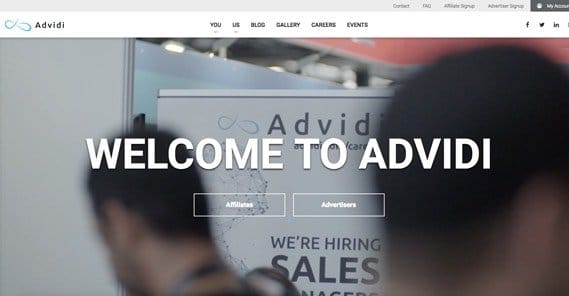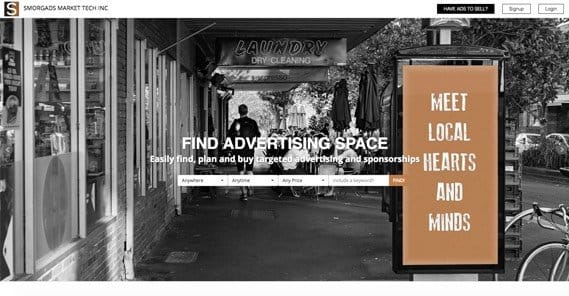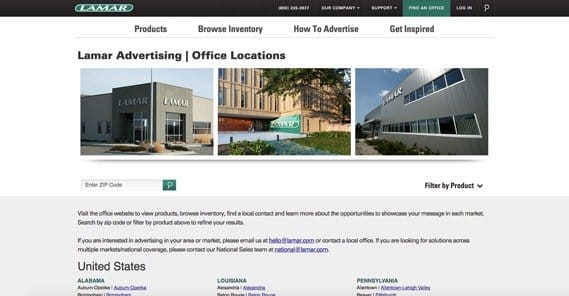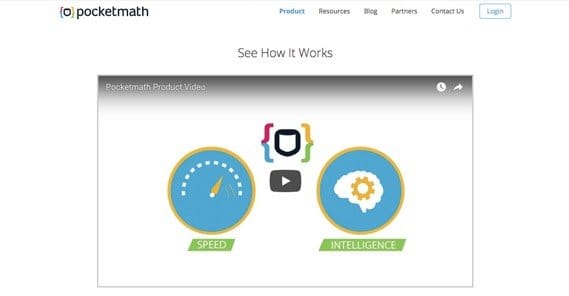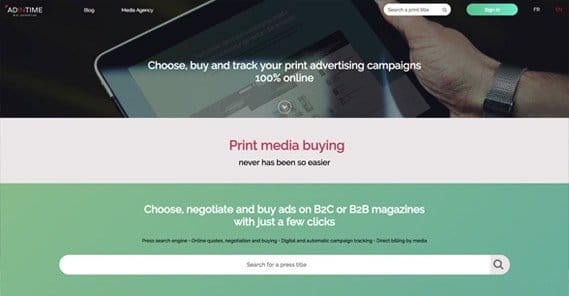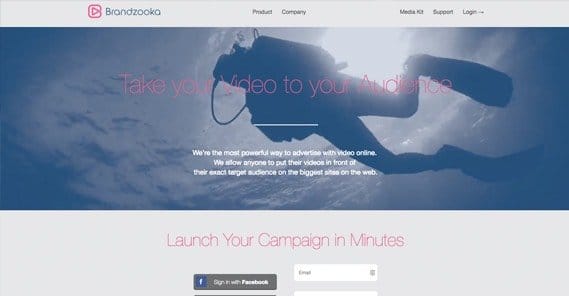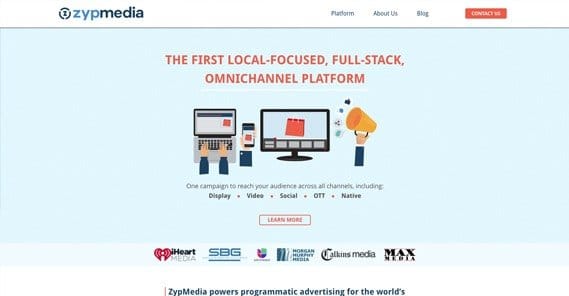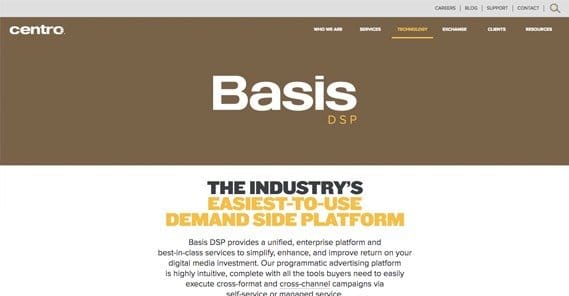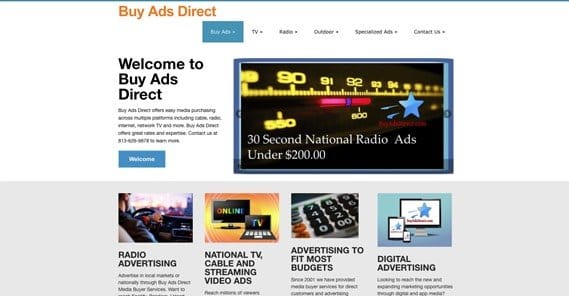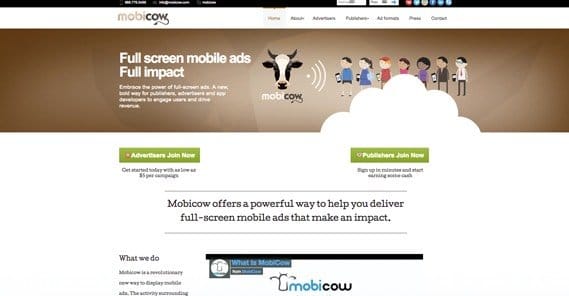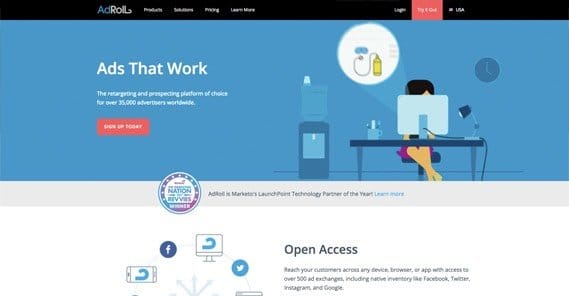The Top 15 Media Buying Platforms for Businesses

Media buying is the process of purchasing advertising space in various media locations. These media locations can vary, from print magazines and newspapers to billboards and television spaces. Sometimes it includes online advertising space, but sometimes that’s treated separately.
Media buying platforms, then, are specialized ad purchasing platforms where you can purchase ad space on these various forms of media. However, since we’re primarily talking about media buying for small and mid-sized businesses, I’m including entries on the list that also provide online ads, or even primarily focus on such ads. I’ve tried to include a bunch of options that aren’t on Every Other List Published Online, and I’ve gone over some of the crucial details for each that make a difference in how you evaluate the platform. Let me know what you think in the comments below!
1. Advidi
Advidi is an affiliate marketing network working with both publishers and advertisers in over 100 different countries. Two things make it stand out; their global reach, and their acceptance of most of the often-banned verticals. While they have a mainstream vertical with surveys, mobile apps, sweepstakes, and lead generation, they also have three other verticals. These are dating – and they allow adult dating sites – online gaming in the casino and betting varieties, and health/beauty, including diet items, skin care, brain enhancement and other niches.
Given that some of their niches are prone to fraud and abuse by people looking for a quick buck, a network that operates in those verticals has to have some way to combat it. Advidi has a fairly good anti-fraud system. It might not be “safer than Fort Knox” as they claim, but it’s pretty good at combating the worst of the spam and fraud you might see.
2. Smorgads
Smorgads is a true media buying platform with a searchable database of ad space provided by the “publishers” across the country. Publishers here can range from concert halls and events to billboards and radio ads. Perhaps the biggest benefit is that the ad space can be geographically targeted down to individual small communities. This makes them ideal for local businesses, as well as online services that primarily wait to market to smaller communities or rural areas.
Any network like Smorgads lives and dies based on the amount of ad space they’re able to sell, and the amount of people willing to buy it. There’s no shortage of businesses looking to advertise, at least. You are able to set up alerts for ad space availability based on seasonality, price thresholds, location, time of day, and even audience demographics. There’s a lot of depth to the platform, so it works quite well.
3. Amagi MIX
Amagi MIX is a media buying platform with two unique elements. The first is that it’s hyper-focused on buying TV ads, to the exclusion of other kinds of advertising. It’s a way you can buy TV commercial ad space, and nothing more. The other unique element is that it’s focused entirely on India and the Indian market.
As you might expect from a TV commercial company, they cover a wide variety of industries. They have customers in finance, ecommerce, education, events, food, hair and health care, personal care, real estate, and retail markets.
They have access to 129 different TV channels, again mostly focused on India. You can narrow down distribution to specific areas of India, specific languages, specific genres, and specific networks.
4. Lamar
Lamar is one of the largest billboard controllers in the United States. Unfortunately, they don’t have one centralized ad buying platform. You generally need to have some idea of where you want to advertise, then find the specific office that covers that area. For example, if I want to advertise in Los Angeles, I would have to specifically visit the LA version of the site. They do at least have a direct contact for multi-region and global campaigns.
Lamar is interesting in that they are entirely focused on billboards and don’t bother to dabble with any other kind of advertising. They either own the billboards they sell, or they lease space for advertising on the sides of buildings or in airports and other facilities. This means you don’t have to deal with fickle publishers, as well.
5. Pocketmath
Pocketmath is an ad platform that blurs the lines between online and in person advertising. They function primarily in the mobile ad space. Essentially, Pocketmath is an advertising system rolled into mobile apps. When users are near an area you want to advertise, the advertisements will shift to those you provide, assuming you have bid appropriately.
In my mind, this is on the verge of being a kind of advertising of the future. This is the kind of advertising that can be easily shifted and adapted to augmented reality or virtual reality system. I would not be surprised to find their advertising present in future augmented reality apps and games, to help businesses reach out to people in a more innovative way. We’re not there yet, though, so take this as it is; a mobile ad buying platform with real time analytics and adaptation capability.
6. Thalamus
Thalamus is a truly global and truly multi-channel ad network. They have advertising space available in dozens of countries, all listed in their categories page. You can advertise basically anywhere in the world. They also manage a wide variety of channels.
What channels are available? Thalamus does social media advertising, online display ads and online video ads. They also do mobile advertising, search advertising and email advertising. On top of all of that, they do both linear and connected TV, and digital audio, which mostly means advertising on radio stations.
Some examples include Fox8, CNBC, CNN, the BBC, and the CBS Sports Network for TV, and AccuRadio, Spotify, iHeartMedia, 8Tracks, and Digg for digital audio advertising.
It’s pretty varied; you can find ad space in podcasts, in audio apps, on TV, and on a whole variety of apps and websites. There are plenty of options for businesses of all sizes.
7. Adintime
This particular platform seems like a standard ad buying platform at first, but they’re actually very focused on one particular type of advertising, and that’s print.
“But print is dead!” you might say, and you’re not entirely wrong. Print media is on its way out, but it’s still a significant part of the media people consume on a daily basis. People read newspapers, people browse magazines, people maintain magazine subscriptions.
You get pretty good advertising rates, and let me tell you; magazine advertising is actually cheaper than you might expect. It’s also fairly targeted; you know a lot about the kinds of people buying certain kinds of magazines. You also get information on an ongoing basis about the issue dates and timelines for ads, the labeling involved, and even a demo you can access. You design and submit your ads entirely online, as well.
8. Brandzooka
Okay, I have to stop for a minute to break kayfabe and just point out how ridiculous some of these ad network names are getting. What is a brand zooka? How does the concept of a bazooka tie in with advertising? It seems needlessly destructive and out of concept, but hey; it’s memorable enough, I suppose.
Brandzooka used to be Visibl. These days, they have partnerships with a lot of high level websites, like Zillow, HGTV, Monster, the BBC, CNN, The Onion, Fandango, and more. Rather than traditional display ads, however, Brandzooka focuses on video advertising. They have hundreds of sites for placement, and bidding has a minimum budget of $50. All you have to do is upload a video advertisement, set a budget, set targeting information, and wait. Your video will be displayed on a wide range of sites within 2 to 24 hours.
9. ZypMedia
ZypMedia is another wide-spectrum ad placement platform. They have mobile ads, television ads, display ads, video ads, social ads, and cross-channel monitoring. Their targeting can be based on IP or on audience demographics, they have dynamic optimization, and they work with native advertising. Retargeting is obviously available, and they even have geographic fencing as an option to restrict ad locations.
One of the primary benefits of ZypMedia is that they have links to a bunch of other ad exchanges as well. When you bid on ad placement, it can go on their own private marketplaces, or on one of over 150 supplemental exchanges, which includes Google, SpotX, Index Exchange, and many more.
10. Centro’s Basis DSP
Basis DSP is a demand-side platform that supports display ads, social ads, video ads, and a lot of mobile ads, including app-based, mobile web, and mobile video campaigns. They are, in fact, primarily focused on mobile and video advertising. If that’s in your wheelhouse, there’s no better place to be.
One added benefit is that instead of using cookies, Basis uses device IDs. This allows for greater precision in targeting, as well as greater flexibility with your advertising. On top of that, they have hyper-local targeting that can go right down to a few city blocks. Now that’s what I call precision.
11. BuyAdsDirect
Try to gloss over the fact that this is probably the least slick looking site on the list. Sometimes good sites have ugly wrapping paper. BuyAdsDirect works with advertising agencies and with publishing houses to connect the two, sort of like a buying club.
They have a wide variety of types of advertising, specializing in TV that ranges from national cable to datellite TV to local cable and infomercials. They have radio advertising on both streaming audio services and national/satellite radio. They have outdoor advertising, like billboards, and they have a small digital ads section. Overall, the site works best for TV ads, particularly when you have a moderate budget to spend.
12. Bonadza (Dead, as of Feb 2018)
Bonadza is a self-serve platform with real time bidding, which gives you a lot of control and the possibility that you can make some good deals if you get in at the right time. They also work with a private marketplace of reputable publishers. You can’t see the publishers without registering, but you can be assured that they have a decent selection.
Despite serving over a thousand customers, Bonadza is actually one of the smaller networks on this list, which means you have some potentially good opportunities. Unfortunately, it also means they might just not cover your niche the way you want. There’s only one way to find out, though, and that’s to contact them.
13. Mobicow
I’m not sure why a cow is a good animal to choose as a figurehead for an advertising agency, but what do I know? In any case, Mobicow is a mobile-specialist advertising platform.
They have a global reach with good targeting and great analytics on the traffic you’re getting. They also work primarily with full-screen mobile ads, the kind that run for 30 seconds and require a tap to close, which can be pretty good for getting eyes on your product. So long as you don’t make your ads annoying, it can work pretty well.
14. AdRoll
With a relatively generic name, AdRoll is a large at platform that works for retail outlets, B2B companies, agencies, and PaaS partners.
They have prospecting and retargeting as resources, and their products include online ads, email ads, and a couple other smaller options. They aren’t particularly innovative and they don’t have a wide range of media options, but they work for what they do.
15. Adperium
Last on a list that you’ve probably just been skimming, Adperium is a more traditional online display ad platform.
You don’t get TV or radio or anything else fancy with it, but you do get a good selection of banner and display options for a broad network of sites. In particular, they have fast auditing and approval for ads, with good filtering to stop the worst spam and keep their publisher network happy. It’s cheap to start a campaign, and they accept multiple types of payments to make it easy.
 ContentPowered.com
ContentPowered.com
